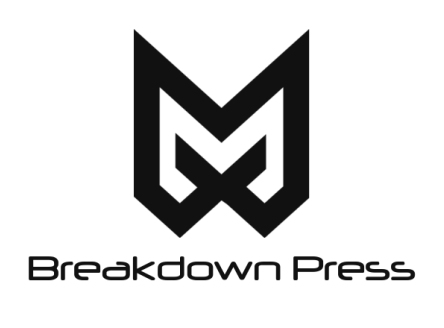Creative Background Design Techniques for Effective Visual Impact
In the world of design, backgrounds play a crucial role in setting the tone and mood of a visual piece. They provide a foundation on which other elements can shine and create a cohesive design. Let’s delve into various creative background design techniques that will help you make a powerful visual impact.
1. Choosing the Right Color Palette
Color is a vital aspect of any design, and selecting the right color palette for your background sets the foundation for the entire composition. Consider the psychological impact of colors and their ability to evoke emotions. Harmonious color combinations can create a visually appealing and emotionally engaging backdrop for your design.
2. Gradient Backgrounds
Gradients have made a significant comeback in recent years. They provide a smooth transition between colors and add depth and dimension to your background. Experiment with vibrant gradients or subtle shades to create captivating visual effects that draw attention.
3. Patterns and Textures
Patterns and textures are essential elements in creative background design. They add visual interest, depth, and uniqueness to your designs. By incorporating various patterns and textures, you can create captivating backgrounds that enhance the overall aesthetic appeal of your visual compositions. Here are three key points to consider when working with patterns and textures:
- Selecting Patterns: Choose patterns that align with your design’s theme and purpose. Patterns can range from simple geometric shapes to intricate motifs or organic forms. Consider the mood you want to convey and select patterns accordingly. For example, a sleek and modern design may benefit from clean lines and minimalistic patterns, while a vintage-inspired design may require more ornate and intricate patterns.
- Balancing Patterns: When working with patterns, it’s important to find a balance between visual interest and avoiding overwhelming your design. Select patterns that complement each other and ensure they don’t clash or compete for attention. You can vary the scale, opacity, or positioning of patterns to create a harmonious composition. Remember, patterns should enhance the overall design without overpowering other elements.
- Incorporating Textures: Textures can add a tactile feel and depth to your background design. They can mimic real-world materials or create abstract visual effects. Experiment with different textures such as grunge, wood grain, fabric, or metal to create the desired visual impact. Textures can be applied subtly or boldly, depending on the desired effect and overall design aesthetic.
By carefully selecting patterns, balancing their use, and incorporating textures, you can create visually stunning backgrounds that elevate your design to new heights. Experimentation and attention to detail are key in finding the perfect combination of patterns and textures that resonate with your design’s purpose and captivate your audience.
4. Abstract and Geometric Shapes
Abstract and geometric shapes are powerful tools in creative background design. These shapes bring a sense of modernity, balance, and visual interest to your designs. By incorporating abstract and geometric shapes into your backgrounds, you can create visually striking compositions that captivate the viewer’s attention.
Abstract shapes allow for creative freedom, as they don’t adhere to specific recognizable forms. They can be fluid, organic, or even surreal, adding an element of intrigue and imagination to your background design. Abstract shapes are excellent for creating a unique and artistic atmosphere, allowing you to experiment with various sizes, angles, and color combinations.
On the other hand, geometric shapes provide a sense of structure, order, and precision. These shapes include squares, circles, triangles, and polygons, and they bring a clean and contemporary aesthetic to your backgrounds. Geometric shapes can be used to convey a sense of symmetry, repetition, or even create a sense of movement. Their straight lines and defined angles can create a visually pleasing and harmonious composition.
When working with abstract and geometric shapes, consider the overall theme and message of your design. Abstract shapes can evoke emotions and create a sense of mystery or curiosity, while geometric shapes convey a more structured and organized feel. Experiment with different combinations, sizes, and placements to find the perfect balance that enhances your background and complements the other elements of your design.
Incorporating abstract and geometric shapes into your background design adds a touch of sophistication, visual interest, and contemporary appeal. Whether you choose to embrace the organic nature of abstract shapes or the precise lines of geometric shapes, these design elements will undoubtedly elevate your backgrounds and create a memorable visual impact.
5. Incorporating Typography
Typography is not limited to the foreground; it can also play a significant role in your background design. Utilize creative typography treatments, such as overlaying text, blending it with shapes, or using it as a pattern element. This technique adds depth and visual interest while conveying a message or reinforcing your brand identity.
6. Image-Based Backgrounds
Images can be a powerful tool to create an immersive background experience. Select high-quality visuals that resonate with your message or brand and use them as the foundation for your design. Ensure that the images are relevant, visually appealing, and appropriately positioned to enhance the overall composition.
7. Parallax Scrolling Effects
Parallax scrolling effects create a captivating illusion of depth and movement, making the background visually engaging. As users scroll, different elements of the background move at varying speeds, creating a visually dynamic experience. This technique adds interactivity and enhances the storytelling aspect of your design.
8. Video Backgrounds
Video backgrounds have become increasingly popular due to their ability to capture attention and convey amessage effectively. They can be used to showcase product features, tell a story, or create an immersive atmosphere. Ensure that the video content is relevant, high-quality, and optimized for web delivery to prevent slow loading times.
| Aspect | Description |
| Visual Impact | Video backgrounds have a high visual impact, capturing attention |
| Storytelling | They can be used to tell a story or convey a specific message |
| Immersive | Video backgrounds create an immersive experience for viewers |
| Engagement | They engage users and encourage them to stay longer on the website |
| Branding | Video backgrounds can reinforce brand identity and values |
| Content Relevance | Videos should be relevant to the overall content of the website |
| Quality | High-quality videos with proper resolution and smooth playback |
| Optimized Loading | Video files should be optimized to prevent slow loading times |
Video backgrounds have become increasingly popular in web design due to their ability to capture attention and convey information effectively. They provide a dynamic and immersive experience for users, engaging them from the moment they land on a website. Video backgrounds are particularly effective for storytelling, as they allow you to visually communicate your message or showcase products and services.
To ensure a successful video background, it is essential to select content that is relevant to your website’s purpose and aligns with your brand. The video should enhance the overall user experience and not distract or overpower other elements on the page. High-quality videos with clear resolution and smooth playback are crucial to maintaining a professional appearance.
However, it’s important to consider the balance between visual impact and loading time. Optimizing video files for web delivery is essential to prevent slow loading times, as this can lead to a negative user experience. Compressing the video without sacrificing quality and utilizing efficient video formats can help minimize loading time while still delivering a visually pleasing experience.
When incorporating video backgrounds, keep in mind that they should complement the overall design and content of the website. They should enhance the user’s understanding of the message or product rather than serving as mere decoration. By selecting relevant and engaging video content, you can create a captivating visual experience that leaves a lasting impression on your visitors.
9. Blurred Backgrounds
Blurring the background can create a sense of depth and focus on the foreground elements. This technique is particularly useful when you want to highlight text or other important design elements. Experiment with different levels of blur to find the right balance that complements your overall design.
10. Duotone Backgrounds
Duotone backgrounds involve using two contrasting colors to create a visually impactful backdrop. This technique adds a modern and stylish touch to your design. Experiment with different color combinations and adjust their transparency to achieve the desired effect.
Incorporating creative background design techniques is essential to ensure effective visual impact in your designs. The right choice of color palette, gradients, patterns, textures, shapes, typography, and interactive elements can elevate your backgrounds and create a lasting impression on your audience. Experiment with these techniques and find a balance that aligns with your brand, message, and desired user experience.
FAQs
- How important are backgrounds in design?
- Backgrounds play a crucial role in design as they set the tone, mood, and overall aesthetics of a visual piece. They provide a foundation for other design elements to shine and create a cohesive composition.
- Can I use multiple creative background design techniques in a single design?
- Yes, you can combine multiple techniques to create a unique and visually captivating background design. Experiment with different combinations to achieve the desired impact.
- Should I consider the responsiveness of backgrounds for different devices?
- It’s important to ensure that your background designs are responsive and adapt well to different screen sizes and devices. Test your designs across various devices to maintain a consistent visual impact.
- How can I create interactive backgrounds?
- To create interactive backgrounds, you can incorporate animations, hover effects, or clickable areas that trigger specific actions. HTML, CSS, and JavaScript can be used to implement these interactive elements.
- What are some tools that can assist in creating creative background designs?
- There are several tools available to assist you in creating creative background designs, such as Adobe Photoshop, Sketch, Figma, Canva, and CSS gradient generators. Explore these tools to unleash your creativity and streamline your design process.

